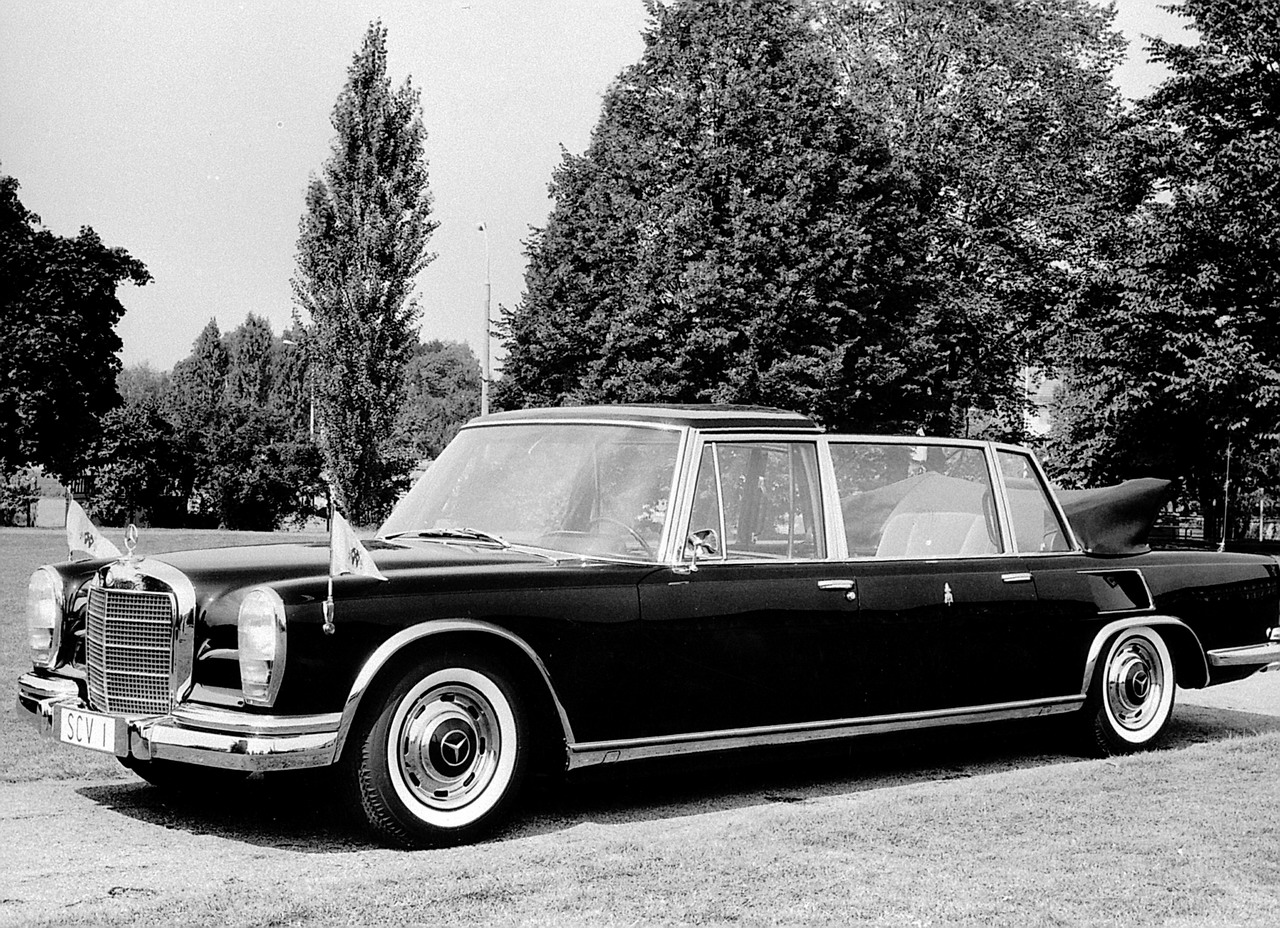
OFFICIAL PRESS RELEASE
Stuttgart, Germany, Nov 05, 2007
Mercedes-Benz landaulets in the post-war period
* Early papal car: The Mercedes-Benz 300 d
* Just 59 factory-built Mercedes-Benz 600 landaulets
The 1950s saw a functional transformation of the landaulet, from a versatile body design for city and country motoring to a vehicle used almost solely as a parade car. This led to the landaulet design becoming an extreme rarity: during the second half of the 20th century Mercedes-Benz built only 59 landaulets based on the Mercedes-Benz 600 model (W 100), plus a few exclusive landaulets specially manufactured in the company’s workshops. Most famous of all are the Mercedes-Benz landaulets made as papal cars.
This tradition started in 1960 with a Mercedes-Benz 300 d landaulet. In fact Mercedes-Benz had already given the Vatican an official car for the pope’s use some decades before, in 1930. But in contrast to the earlier “Rome car” – a Mercedes-Benz Nürburg 460 Pullman limousine – this time the vehicle had a folding convertible top at the rear. Pope John XXIII himself had requested a landaulet body for the new automobile from Stuttgart. The meticulously handcrafted W 189 landaulet (only two of which were ever made) was based on a chassis with a wheelbase lengthened by around 45 centimeters to a total of 3.6 meters. The car was also around ten centimeters higher than the production model.
The three-liter six-cylinder in-line engine developing 160 hp/118 kW was the same as in the production version. This gave the papal car a top speed of 160 km/h, but of course it was generally driven at a much more sedate tempo on official outings. At such times, with the roof open, the rear side windows could be completely removed and placed in specially designed brackets in the trunk. The partition between front and rear seats and the front windows were electrically operated and lowered simply by pressing a button.
The locking devices for the roof mechanism were accessible from the driver’s seat, and the convertible top itself was opened and closed in a matter of seconds. Steps automatically opened out from the car floor when the rear doors were opened, making it easier for the pope to enter and alight from the vehicle. The throne-style seat for the pontiff was placed in the middle at the rear, facing in the direction of travel, with two folding seats opposite, attached to the partition, for accompanying staff. Around the papal seat, which was electrically adjustable, were the controls for air conditioning, intercom and other functions. At the presentation of the car in 1960, the pope was clearly delighted with the vehicle equipment.
Landaulet as small-run production series: Mercedes-Benz 600
The 300 d landaulet attracted considerable attention – but the most notable development in the history of this body design in the second half of the 20th century came with the Mercedes-Benz factory-built landaulet versions of the 600 model (W 100). In the book “Mercedes-Benz 600” published in 2001, author Heribert Hofer describes the landaulet from this model series as “a genuine old-style parade car, a unique automotive treasure.” And indeed, heads of state like Queen Elizabeth Elisabeth II, Pope Paul VI and his successors and heads of government all around the world chose this model to greet onlookers as they drove through the streets. The German government also regularly called on a Mercedes-Benz 600 landaulet for ceremonial occasions, although the vehicle was not owned by the state. Instead, the car was kept in the company fleet in Stuttgart and made available on request.
Production of the 600 model, in the “Grand Mercedes” tradition, started in September 1964. The Pullman landaulet, along with a number of limousines, was a production variant of the Pullman body with the long wheelbase of the W 100. Mercedes-Benz offered its customers four different landaulet versions based on this exclusive design: the standard version had four doors, facing rear seats, and a folding top extending as far as the front edges of the rear doors. There was also a special six-door version with a seat bench in the rear and additional fold-out seats facing in the direction of travel. In this variant, as in the six-door Pullman limousine, the middle doors could also be provided without handles. Both the above landaulets - the four-door and six-door design – could also be equipped on request with a long convertible top reaching as far as the partition.
All these versions were based on a long-wheelbase W 100 chassis, but in 1967 a one-off short-wheelbase W 100 landaulet was also produced. The vehicle was commissioned by Count von Berckheim. The ex-racing driver’s Mercedes-Benz 600 combined the handling qualities of a short-wheelbase design with the traditional virtues of the landaulet. The time and effort involved in this one-off project indicates that the 59 Pullman landaulets built hardly represented a “series production” operation in the strict sense - in fact, with such a wide variety of interior equipment options and special features it would be difficult to find two identically-equipped 600 landaulets. But one thing all these vehicles had in common was their exceedingly high price. The exclusive body design with the folding convertible top did not appear on the official price list, but the Mercedes-Benz 600 was regarded as the world’s most expensive production car of its day.
Mercedes-Benz 600 landaulet for the Vatican
In 1965 Mercedes-Benz presented the Vatican with another landaulet based on the W 100 Pullman. The manufacture of the car was a cooperative project of the testing and production departments in Sindelfingen. The four-door landaulet was presented to Pope Paul VI at his summer residence in Castel Gandolfo by Hermann Josef Abs, Chairman of the Supervisory Board of Daimler-Benz AG, General Manager Walter Hitzinger, and Board of Management members Fritz Nallinger and Arnold Wychodil, along with Karl Wilfert and three employees from the Daimler-Benz plant in Sindelfingen.
The equipment of this landaulet differed from the production version in several details: the rear doors were 25.6 centimeters wider, and came right up to the partition. The rear doors also included new operating controls, designed to be within easy reach from the papal seat located centrally in the back of the passenger compartment. The designers at Sindelfingen made the roof seven centimeters higher to provide ample head room - a modification required because of the flat floor in the rear of the W 100, concealing the propeller shaft tunnel beneath. Special equipment included air conditioning, an intercom for communicating with the driver, and the ability to shift the single armchair-style seat at the rear in several different directions.
The pontiff was delighted with the sophisticated technology in his W 100. “The name of Mercedes has become proverbial all round the world for German diligence and skill – which makes this gift all the more precious,” said Paul VI in his words of appreciation for the automotive engineering achievements of the team in Stuttgart back in 1965. The Mercedes-Benz 600 Pullman landaulet bearing the legendary license plate SCV 1 (the abbreviation for “Stato Città del Vaticano”) is now on display in the Mercedes-Benz Museum in Stuttgart.
W 109 and V 140 landaulets built in-house
And the specialists at Mercedes-Benz built another two landaulets for the Vatican in the years after 1965, both based on standard limousines. The first of these papal cars, built as early as 1966 with a single rear seat, was a landaulet based on a Mercedes-Benz 300 SEL limousine (W 109 series) with standard wheelbase (2.85 meters). The seat could be moved to the right if necessary to create room for a passenger on the fold-out seat fitted on the partition. This car remained in use for many years, in parallel with the W 100 landaulet. The 300 SEL was not equipped with quite the same level of luxury as the Mercedes-Benz 600 – for example there was no air conditioning in the shorter vehicle. The car was however retrofitted with armor plating in 1981.
This was followed in 1997 by a landaulet based on the Mercedes-Benz S 500 with a long wheelbase (V 140). Like its predecessors, this was a “no expense spared” one-off project that combined traditional values with contemporary technology. The car had numerous special equipment features. The electro-hydraulically operated convertible top, when closed, was five centimeters higher than in the limousine, to provide more head room above the papal seat. On taking delivery of the vehicle in person in 1997, Pope John Paul II was given a briefing on the car’s technical features and praised the design.
Heir to a great tradition
The 600 model was the only Mercedes-Benz ever built as a production landaulet over the last 60 years. However, the brand has repeatedly made good use of this type of bodywork with specially designed superstructures as for the papal cars. The sense of a unique driving culture that is epitomized in the landaulet is as strong as ever in Stuttgart. And it is this knowledge and living heritage from the past that provides the basis for the Maybach landaulet in 2007.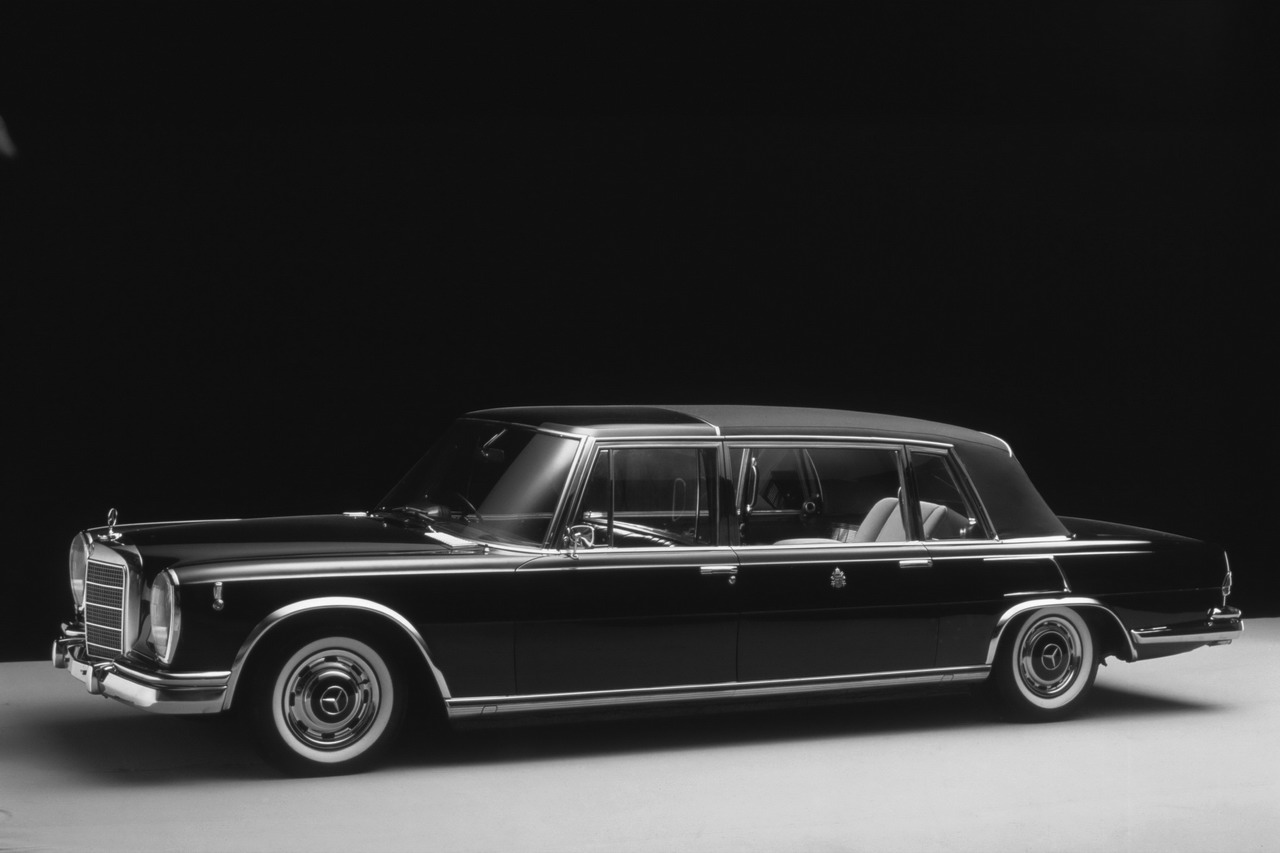

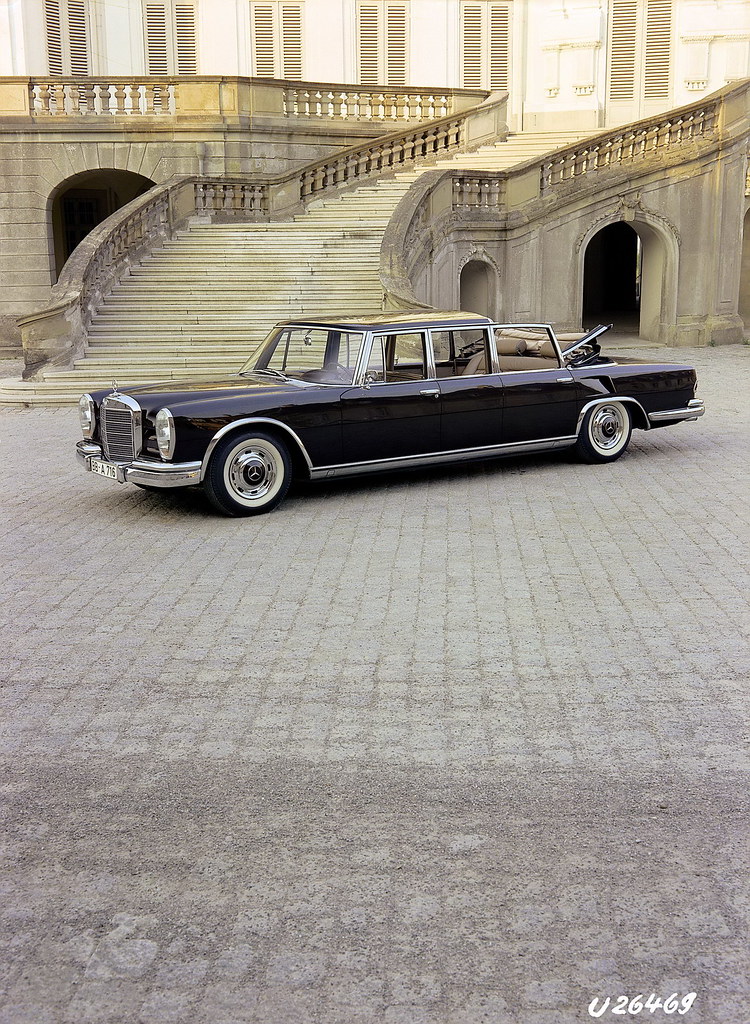
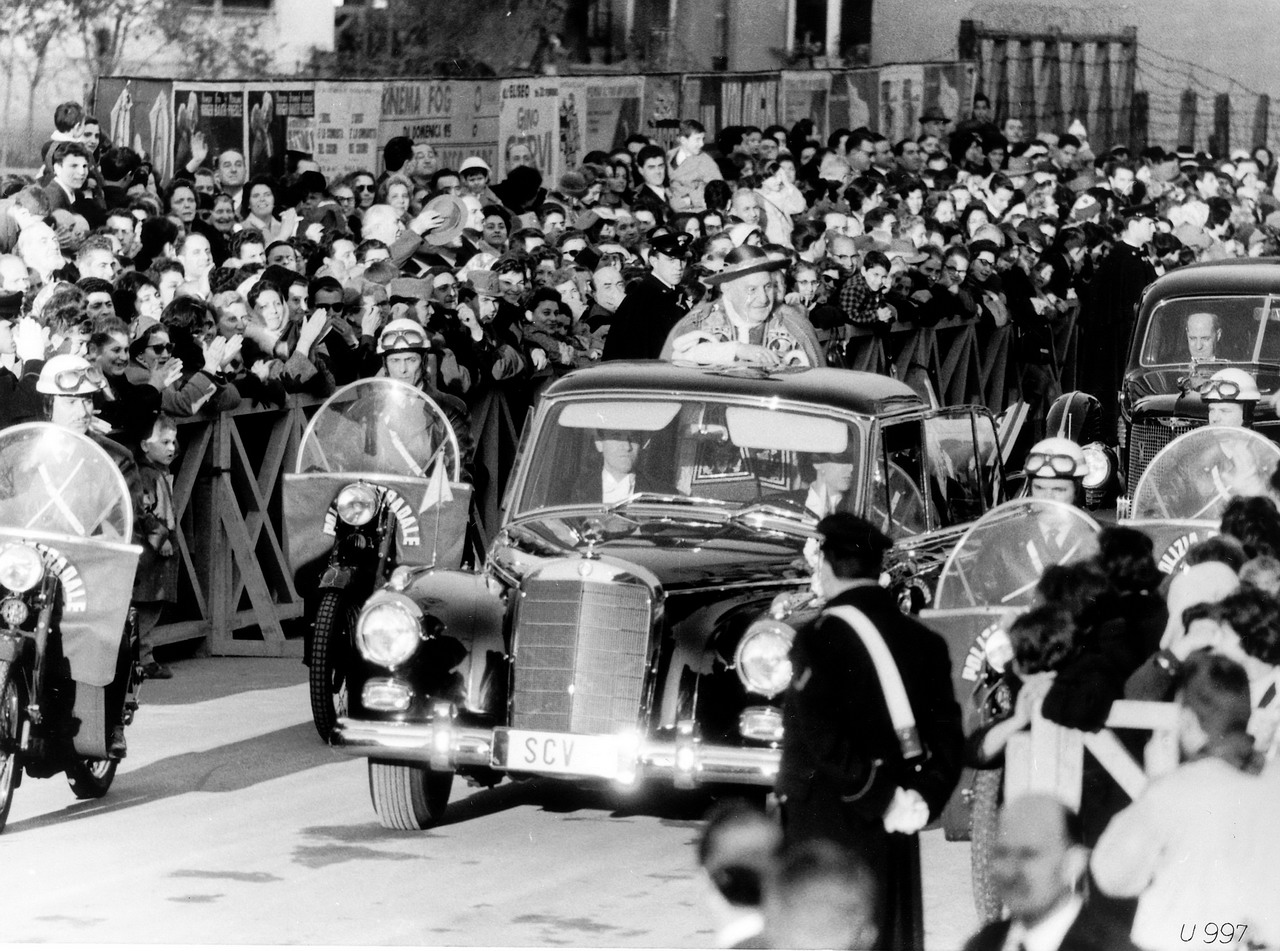
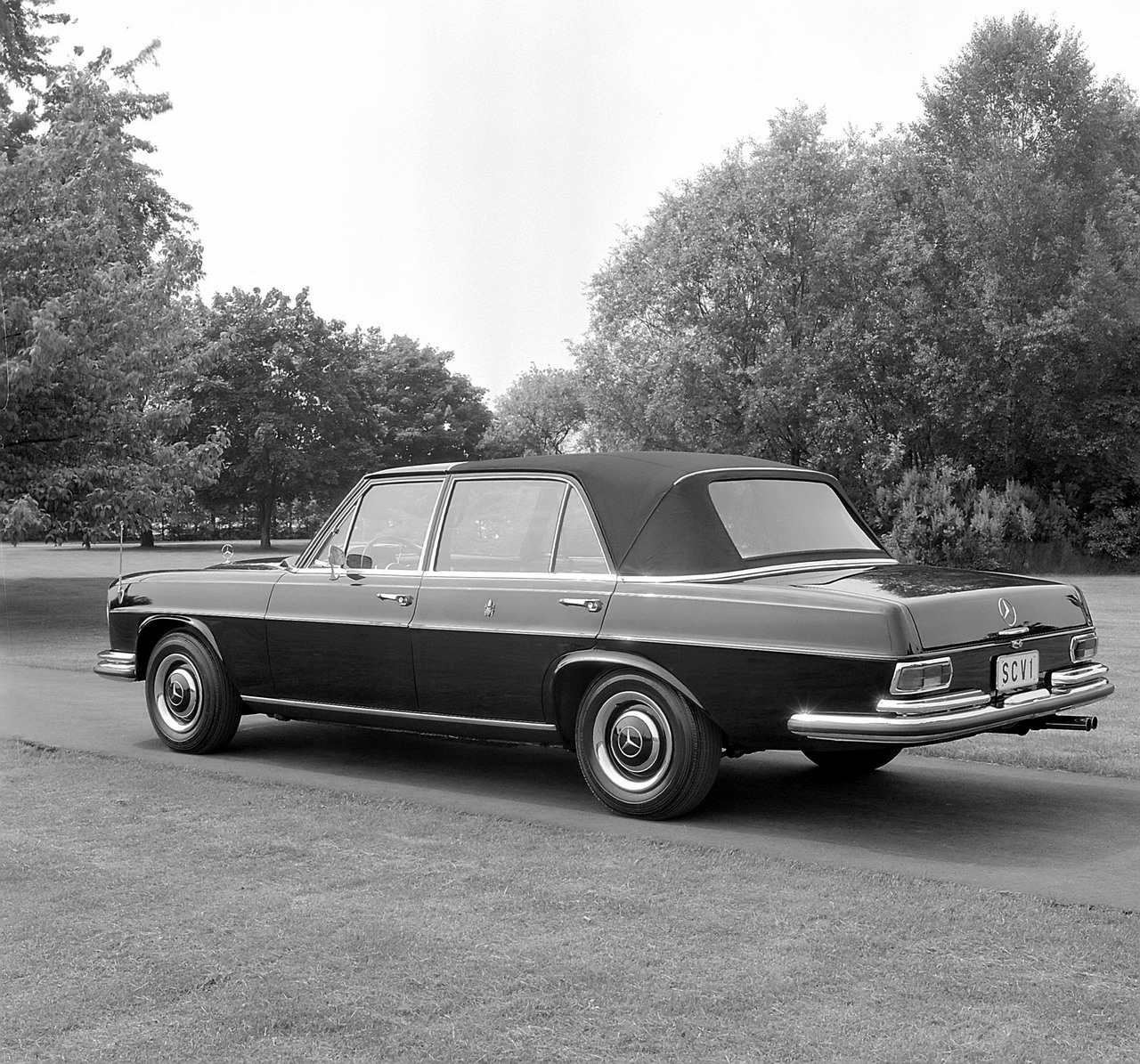



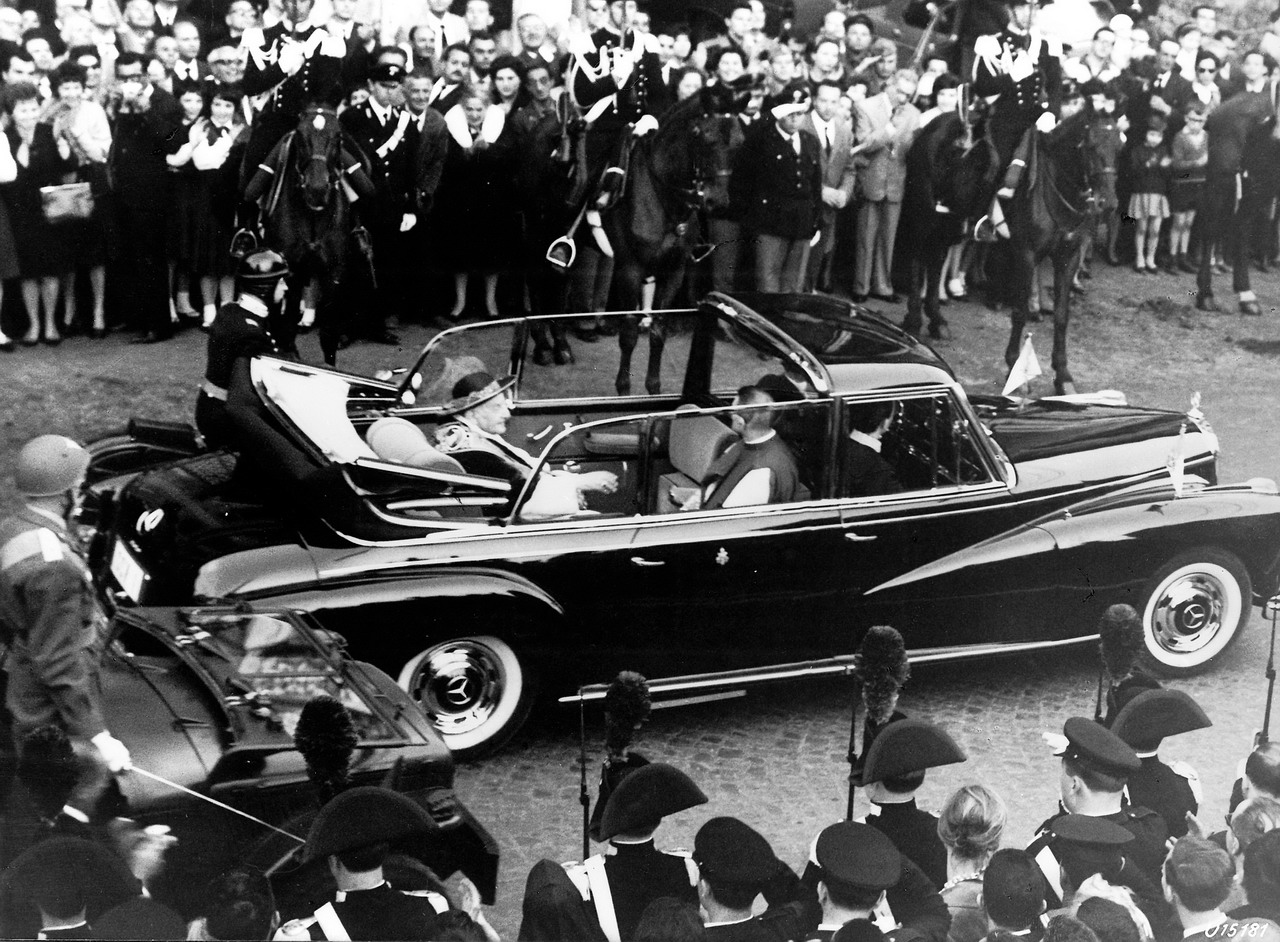


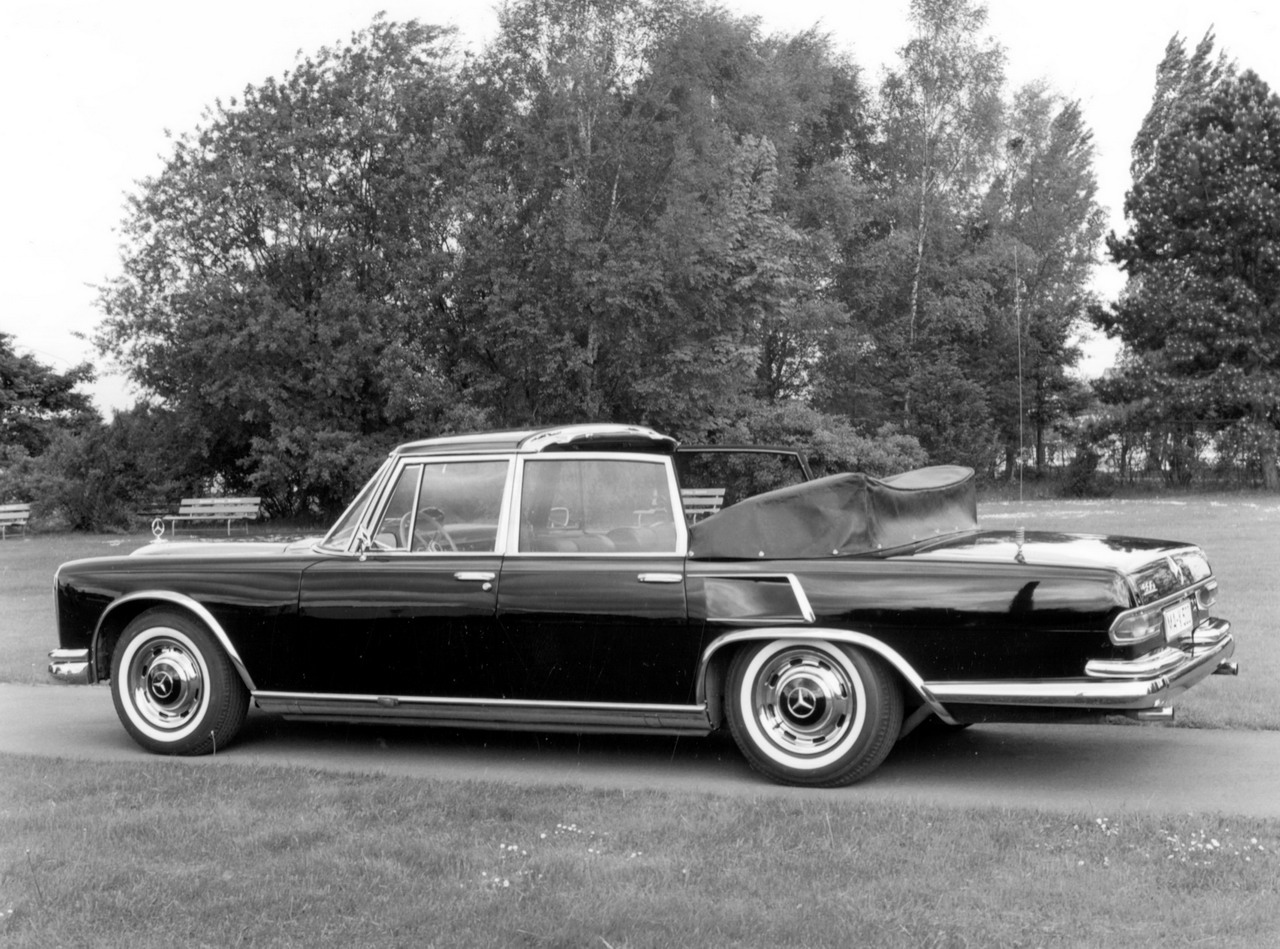
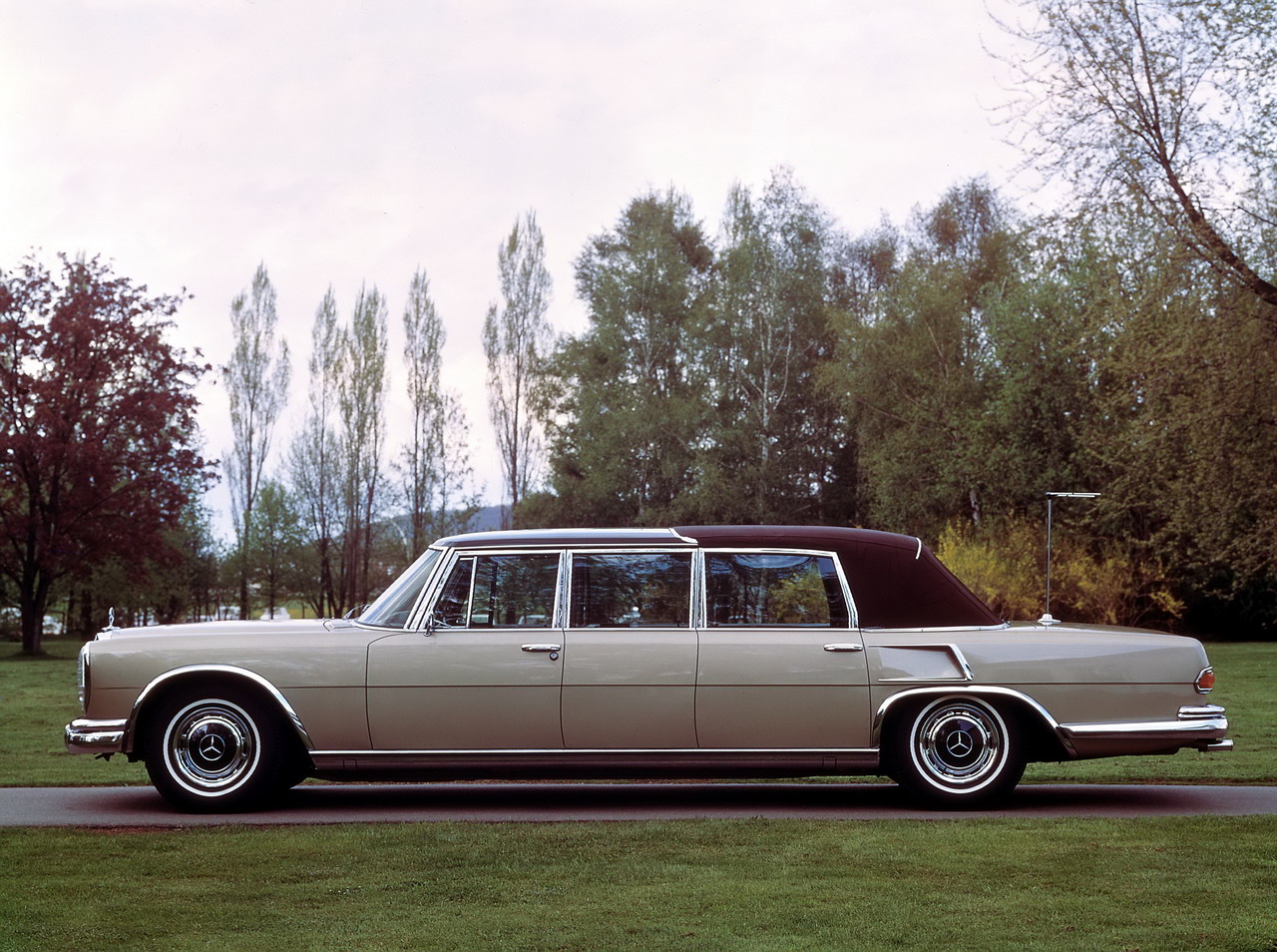
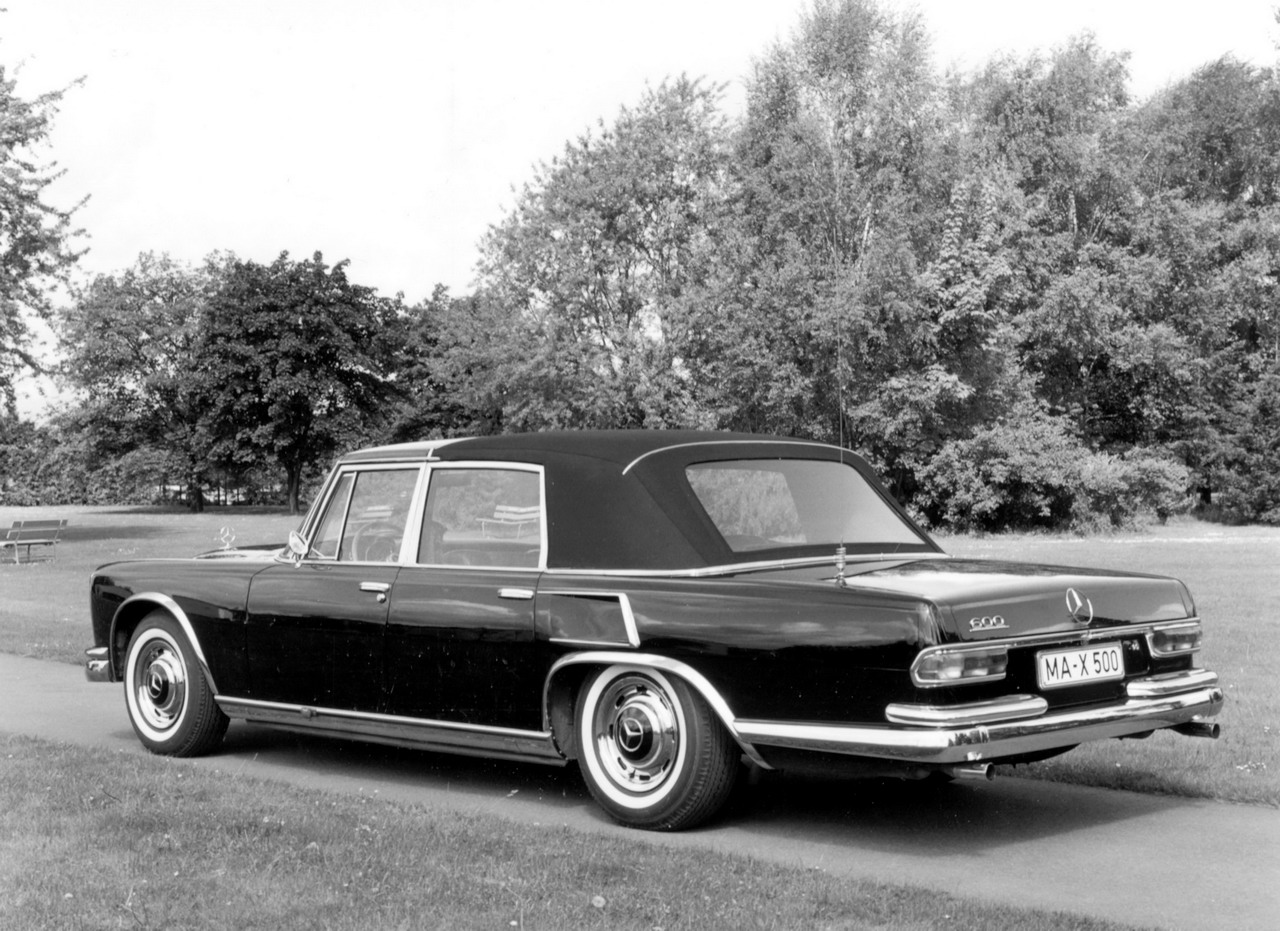
.jpg)
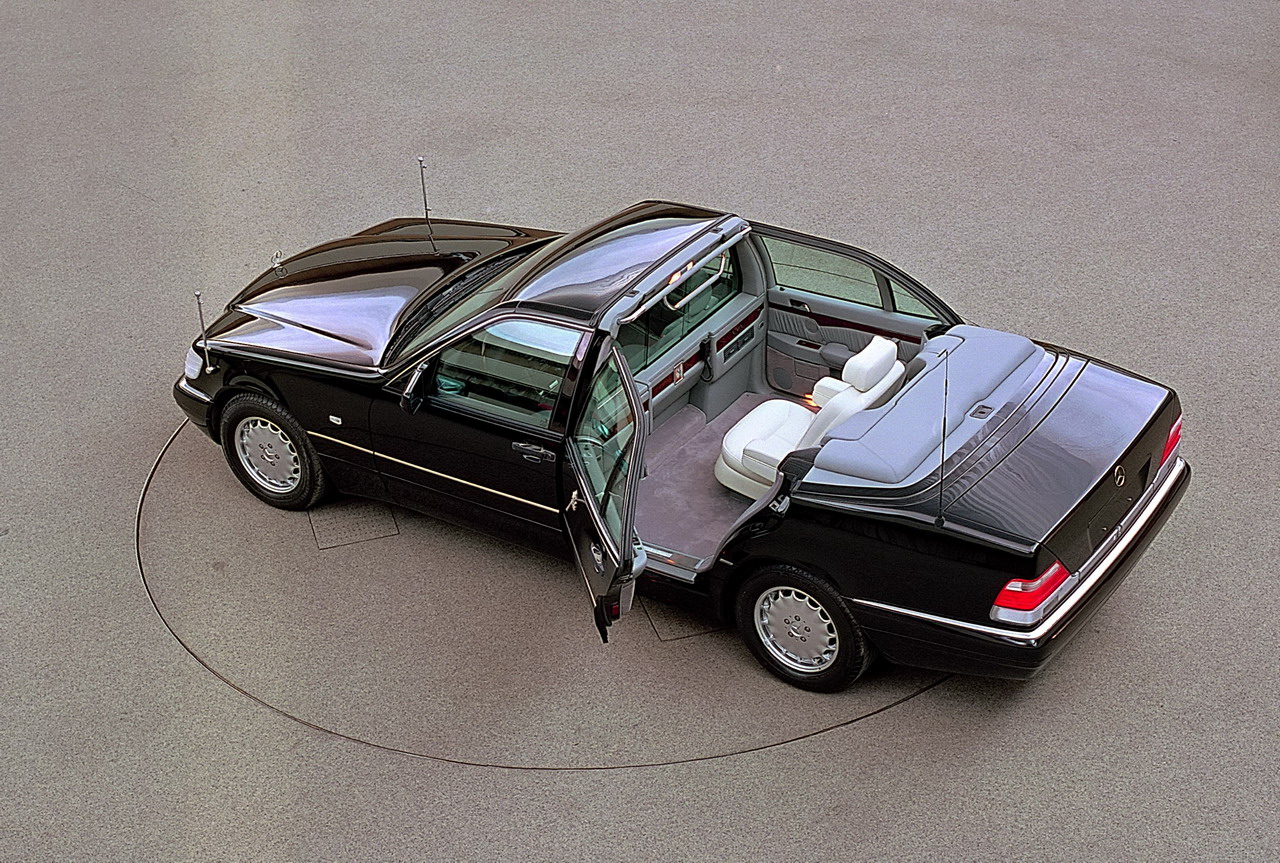

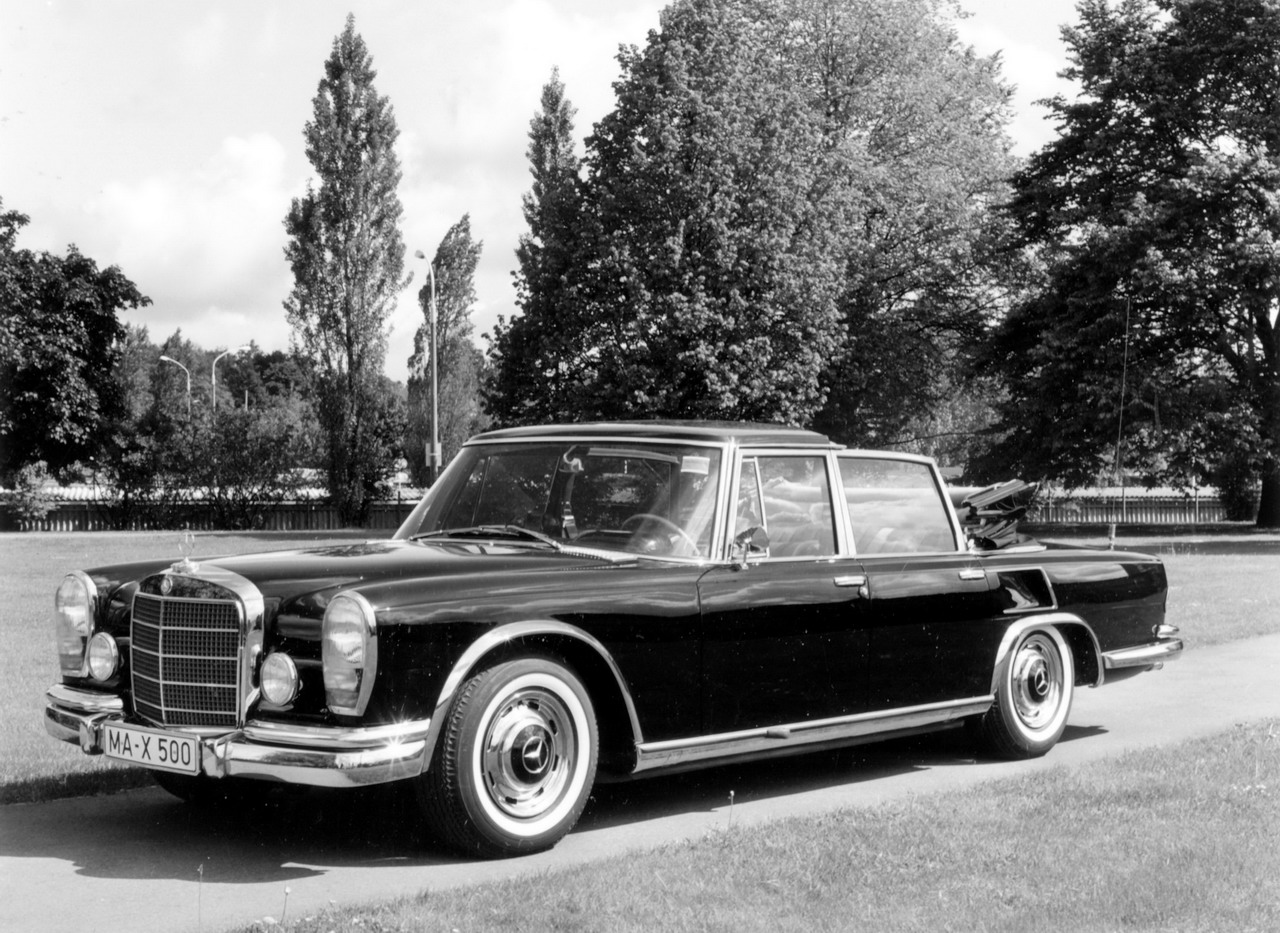

Copyright © 2008, Mercedes-Benz-Blog. All rights reserved.
Search
Archives
-
▼
2008
(1138)
-
▼
September
(125)
- The AMG Driving Academy [3 TEXTS]
- More Service With Free SetraCard
- Mercedes, 180° from expected. The GLK.
- Mercedes-Benz SLR McLaren Roadster 722 S: Thrillin...
- F1 Singapore - SUN - The Race - Lewis Hamilton Ext...
- F1 Singapore - SAT - Qualifying - Lewis Hamilton o...
- SPY:2011 CLS-Klasse
- DAY 1:Exclusive photos from Singapore
- F1 Singapore - FRI - Free Practice
- Mercedes-Benz design competition accompanies GLK m...
- Mercedes-Benz BlueTec EEV trucks
- First global Daimler Trucks and Buses Supplier Dia...
- F1 Singapore - Official Schedule
- Mercedes-Benz Trucks: trucks you can trust
- The "Trust Edition" - high-class workmanship from ...
- Vodafone McLaren Mercedes Statement
- Mercedes-Benz Trucker Selection: practical and sty...
- Improved safety in the dark: The new adaptive high...
- Daimler AG at InnoTrans in Berlin
- Statement on Daimler stake in Chrysler
- Actros voted “Truck of the Year 2009”
- Mercedes-Benz IPTV Weekly Show 23.09.2008
- Preview:2012 Mercedes-Benz GLA
- SPY:2011 SLC
- DTM Barcelona - The Race - Paul Di Resta Wins with...
- DTM Barcelona - Qualifying - 25th pole for Bernd S...
- SPY + CGI:2009 E-Klasse
- VIDEO:Mercedes-Benz S 400 BlueHYBRID
- DTM Barcelona - Preview
- F1 Singapore - Preview
- 2009 E-Klasse:Official or not?
- Daimler Financial Services Opens Business in Romania
- Daimler presenting 11 “Green” Commercial Vehicles ...
- CGI:Future E-Klasse Coupe & Cabrio
- Technical Data:The New S 400 BlueHYBRID
- SPY:New photos showcasing the next E 63 AMG
- Mercedes-Benz S 400 BlueHYBRID: The CO2 champion i...
- Mercedes-Benz IPTV Weekly Show 16.09.2008
- SPY:2009 E-Klasse Coupe
- Mercedes-Benz presents the GLK-Class Selection: Se...
- Mercedes-Benz presents itself as a competent After...
- Mercedes-Benz-Blog TRIVIA: 1883: Foundation of Ben...
- VIDEO:Mercedes-Benz C 250 CDI BlueEFFICIENCY
- F1 Monza - SUN - The Race - Heikki Kovalainen second
- VIDEO:ConceptFASCINATION Preview Clip
- F1 Monza - SAT - Qualifying - Heikki Kovalainen on...
- Rumor:2010 Mercedes-Benz CLR
- SPY-W212 + W211
- 2015: 20% of total production=hybrid models
- F1 Monza - FRI - Free Practice
- SPY:2010 SLC
- SPY:Mika Hakkinen and Klaus Ludwig testing the 201...
- Mercedes-Benz ConceptFASCINATION study showcases n...
- Mercedes-Benz ConceptFASCINATION:First high-res wa...
- Mercedes-Benz renaming procedure continues
- ConceptFASCINATION:Studio shots
- Possible name changes for next Mercedes-Benz models
- Mercedes-Benz ConceptFASCINATION:Bigger resolution...
- LEAKED:The impressive Mercedes-Benz ConceptFASCINA...
- Mercedes-Benz-Blog TRIVIA: Mercedes-Benz Classic D...
- F1 Monza - Preview
- Mercedes-Benz Championship in Pulheim near Cologne...
- C 250 CDI BlueEFFICIENCY Prime Edition: Efficiency...
- SPY:Mika Hakkinen goes behind the steering wheel o...
- Vodafone McLaren Mercedes proceeds with the appeal...
- Mercedes-Benz IPTV Weekly Show 09.09.2008
- New SPY photos with the 2010 Flugelturer
- World premiere: the new construction Actros - the ...
- Mercedes-Benz-Blog TRIVIA: Mercedes-Benz Nürburg: ...
- SPY:2010 SLC/AMG Flugelturer
- SPY:Fresh pics of the CLK
- F1 Spa-Francorchamps - SUN - The Race
- Mercedes-Benz-Blog TRIVIA: Mercedes-Benz Classic D...
- What really happened yesterday at Spa
- 7th Sep. 2008 - The day Formula 1 died
- SPY:2010 E-Klasse
- F1 Spa-Francorchamps - SAT - Qualifying - Lewis Ha...
- Mercedes-Benz-Blog TRIVIA: Landaulet: Al fresco mo...
- Mercedes-Benz-Blog TRIVIA:Landaulet: Al fresco mot...
- Mercedes-Benz-Blog TRIVIA:Landaulet: Al fresco mot...
- Mercedes-Benz-Blog TRIVIA:Landaulet: Al fresco mot...
- Mercedes-Benz-Blog TRIVIA:Landaulet: Al fresco mot...
- Mercedes-Benz-Blog TRIVIA: The Research Cars of Me...
- Mercedes-Benz-Blog TRIVIA:The Research Cars of Mer...
- Mercedes-Benz-Blog TRIVIA:The Research Cars of Mer...
- Mercedes-Benz-Blog TRIVIA:The Research Cars of Mer...
- Mercedes-Benz-Blog TRIVIA:The Research Cars of Mer...
- Mercedes-Benz-Blog TRIVIA:The Research Cars of Mer...
- Mercedes-Benz-Blog TRIVIA:The Research Cars of Mer...
- Mercedes-Benz-Blog TRIVIA:The Research Cars of Mer...
- Mercedes-Benz-Blog TRIVIA:The Research Cars of Mer...
- Mercedes-Benz-Blog TRIVIA:The Research Cars of Mer...
- Mercedes-Benz-Blog TRIVIA:The Research Cars of Mer...
- Mercedes-Benz-Blog TRIVIA:The Research Cars of Mer...
- Mercedes-Benz-Blog TRIVIA:The Research Cars of Mer...
- Mercedes-Benz-Blog TRIVIA:The Research Cars of Mer...
- Mercedes-Benz-Blog TRIVIA:The Research Cars of Mer...
- Mercedes-Benz-Blog TRIVIA:The Research Cars of Mer...
- Mercedes-Benz-Blog TRIVIA:The Research Cars of Mer...
- Mercedes-Benz-Blog TRIVIA:The Research Cars of Mer...
-
▼
September
(125)


